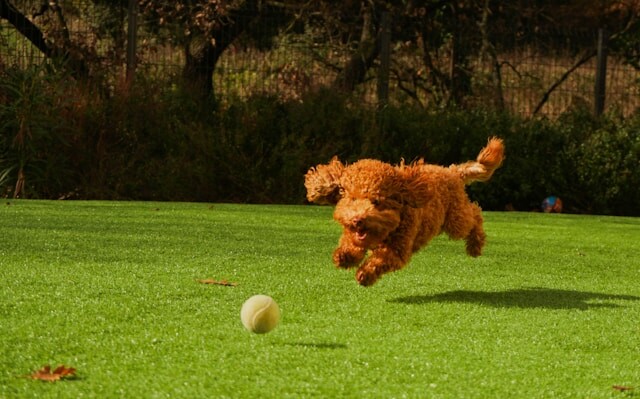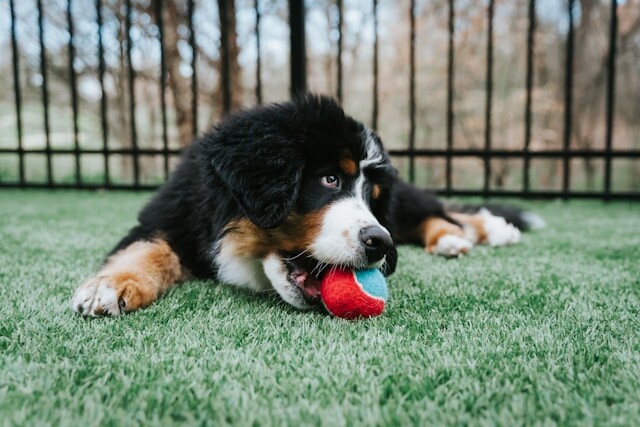
Have you ever seen a dog playing with a ball?
Some puppies struggle to bite a ball that’s too big for their mouths, while retrievers might stare intently at a ball floating on the water for what feels like forever. There are even dogs that play fetch with machines that automatically throw the ball, dogs that grab their owner’s socks and refuse to let go, and those that proudly carry a long branch home in their mouths. For dogs, biting and carrying things seems to hold a special meaning.
Dogs love to chew, and it’s a natural behavior with multiple benefits:
- Natural Instinct: Chewing stems from a dog’s evolutionary need to gnaw on bones and tough materials.
- Teething Relief: Puppies chew to ease the discomfort of teething.
- Exploration: Chewing helps dogs explore their environment, much like humans use their hands.
- Boredom or Stress Relief: Chewing offers mental stimulation and soothes anxiety.
- Oral Health: Chewing helps clean teeth and gums, reducing plaque buildup.
💡 Pro Tip: Provide your dog with safe chew toys to satisfy their instinct and redirect them from chewing inappropriate items like furniture or shoes.
Is It a Good Idea to Train Your Dog to Bite and Pull a Toy? 🐶
Yes, training your dog to bite and pull a toy, like playing tug-of-war, can be highly beneficial if done correctly. Here’s why:
- Mental and Physical Exercise: Tugging helps burn energy and keeps your dog engaged.
- Bond Building: Interactive games strengthen your relationship with your dog.
- Confidence Boosting: Controlled tug games can help timid dogs feel more secure.
- Impulse Control: Teach commands like “drop it” or “take it” during play to improve discipline.
- Fun and Rewarding: Tug games provide entertainment and reward for your dog.
💡 Tips for Safe Tug Play:
- Use a durable toy designed for dogs.
- Set clear rules and avoid rough play.
- Always end the game positively to keep it enjoyable.
When Is It Best to Start Training My Dog to Play Ball? 🎾
You can start teaching your dog to play ball as soon as they’re a puppy, ideally at 8-12 weeks old, or at any age when they’re ready to learn.
How to Get Started:
- Choose the Right Ball: Select a ball that’s the appropriate size and texture for your dog.
- Introduce the Ball Slowly: Let your dog sniff the ball and roll it gently to spark interest.
- Encourage Fetch: Toss the ball a short distance and use praise to encourage your dog to bring it back.
- Teach “Drop It”: Reward your dog when they return the ball. Use treats or praise to reinforce good behavior.

💡 Additional Play Tips:
- Play Is the Best Reward: Your dog will enjoy games like fetch as much as tasty treats.
- Positive Reinforcement: Instead of forcing the ball away, teach your dog that bringing it to you leads to rewards.
- Short Bursts of Fun: Avoid overly long sessions—play several short rounds to keep it exciting.
- Store the Toy After Play: Put the ball or toy out of sight when playtime is over so your dog remains interested.
- End on a Positive Note: Always conclude playtime in a fun way to create positive associations.
Playing ball with your dog isn’t just exercise—it’s a bonding experience and a chance to teach valuable skills in a fun, engaging way!
